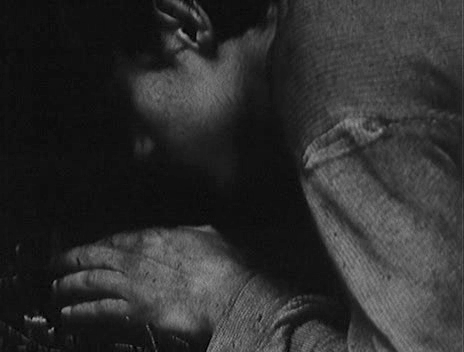
‘Jan Němec’s first three features—made in a creative flurry between 1964 and 1967—are pared-down, taut, fatless movies. Taken together, they can be seen as a central source text for the Czech New Wave, of which Němec is one of the founding fathers. The films have, among other things, the same brand of slapdash anarchism as Věra Chytilová’s Daisies; the same clipped, elliptical approach to storytelling as František Vláčil’s The White Dove; and—at least in the case of Martyrs of Love—the same sensitivity to the pangs and pitfalls of first-blush romance as Jiří Menzel’s Closely Watched Trains. But where his New Wave colleagues (Vláčil and Chytilová in particular) tended to aspire to a kind of filmed poetry, in which each image feels as if it’s always wrestling out of its narrative context, Němec seems most at home making the cinematic equivalent of novellas. The longest of these features runs for 71 minutes. Two mostly forgo character names and spoken dialogue. All three take place in worlds that feel closed-off, decontextualized, and hyper-pressurized. In Němec’s cinema, abstract questions—What makes us free? What, if anything, serves as a stable basis for political authority? What makes us unfree: ourselves or others?—are borne concretely out in the movement of bodies: at some moments penned chafingly in, at others set in nervous, unstable motion.
‘Diamonds of the Night, Němec’s debut feature, begins in the latter mode. Its opening images—of two nameless young men sprinting desperately through a field, fleeing from a pack of invisible pursuers as gunshots echo in the near distance—waste no time building momentum or laying down exposition. The effect is startling: it’s as if the film has been playing for an hour already and we, its dozing viewers, were just now snapping back into focus. Němec’s handheld camera darts beside the two teenagers like a third, slightly burlier runaway urging them to pick up the pace, threatening to leave them behind. It’s immediately evident that they’re running for their lives—which, it soon becomes clear, means that they’re running primarily for the freedom to keep running.
‘The boys’ emaciated bodies, the flashback that finds them huddled against the wall of a cattle car surrounded by fellow prisoners, and the “KL” (Konzentrationslager) scrawled in white paint on the backs of their coats place the film unambiguously in Nazi-occupied Czechoslovakia, but Diamonds of the Night is too single-minded in its focus and too narrow in its scope to work as a historical evocation. Instead, it’s a string of concrete episodes (treks through the forest, chance run-ins with local farmers, train-car escapes, encounters with childhood sweethearts, the discovery of a swarm of ants crawling on an eye socket or a hand)—some present, some past, some real, some imagined, and some alternate versions of the same events, all given equal weight by Němec’s breathless, associative editing.
‘On one hand, the film often seems to be playing out inside the heads of its rattled heroes; on the other, the present dangers are clearly, nerve-wrackingly real. Němec would set his characters’ subjectivity almost entirely aside for his second feature, then dive fully into their heads in his third; here, he’s operating in a slippery middle ground between those two extremes. The film’s final passage is one of Němec’s most disturbing (and morbidly funny) screeds on power and its abuses—the boys are taken prisoner by a gang of armed, degenerate old men, who soon burst into a gluttonous sing- and dance-along in the presence of their starved captives—but it also permanently collapses the shaky boundary between these victims’ inner and outer lives. The film ends more or less where it began, only now the forest has been transformed from a site of literal, life-or-death struggle to a kind of shadowy mental theater: there’s no struggle, no momentum, only inconclusive drift. Forget “historical context,” Němec seems to say, forget even the distinction between reality and dream, and eventually you’ll arrive at a kind of distilled emotional truth.
‘A Report on the Party and the Guests, made in 1966 but released two years later, is widely considered Němec’s most politically charged film—partly thanks to its expanded, bureaucratic-sounding English title (the original, as Michael Brooke has pointed out, would translate to something like “About a Celebration and Guests”) and partly because it had the dubious honor of being “banned forever” by the Czech communist regime in 1973. Indeed, the movie works spectacularly well as a allegory for the dark side of political utopianism: a handful of upper-middle-class picnickers are accosted by a band of jovial, bullying goons, then “rescued” by a well-spoken, white-suited man and welcomed to his outdoor birthday party—which, it soon becomes clear, they’d be well advised not to leave. Němec has a sharp ear for the kind of psychological manipulation practiced by regimes in his day: the appeal to social mores, peer pressure, and politesse to keep subjects in line; the presentation of the ruler as a kind of benevolent host figure; the widely proclaimed fiction that life under the state is a party and we all ought to be its grateful guests.
‘And yet it would be a mistake to read the film as a direct, one-to-one allegory. Allegories are always nudging their audience suggestively, as if to say, “You know what I really mean, don’t you?” The scary thing about Němec’s film is that it doesn’t seem to mean much beyond what it says; if it does correspond to some deeper truth, it’s not one that simply can’t be spoken aloud for fear of retribution, but one that can’t possibly be thought. In its terrible literalness, its strict commitment to the logic of absurd situations, and its abundance of memorable, stand-alone details, A Report on the Party and the Guests is arguably closer to parable than allegory: ultimately, it has less to do with this or that authoritarian regime than it does with the fragile nature of human freedom, and the capacity of people to let themselves be corralled within a certain prescribed system of thought, a certain pattern of etiquette, or even a simple traced-out line in the earth. Accordingly, with this film Němec traded Diamonds of the Night’s handheld, on-the-move shooting style for something at once more composed and more claustrophobic. The movie’s compositions are often almost imperceptibly off-balance, its cuts unpredictable, its tone a weird mixture of laconic humor and heavy dread. Němec has often cited Kafka as a formative influence, and Party can be seen as one of his most direct attempts to find a cinematic analogue for his literary hero’s deadpan, slightly stiff, disarmingly blunt prose style. With its unexplained-imprisonment scenario, the film echoes The Trial, but it’s arguably closer in spirit to one of Kafka’s Zurau Aphorisms: “a cage went in search of a bird.”
‘Between January and August 1968, the Prague Spring gave Czech artists a brief window of relative freedom, and A Report on the Party and the Guests finally received a domestic release. In the interval, Němec had already finished Martyrs of Love: a triptych of stories concerning the misadventures of three clumsy, inexperienced young romantics. Němec gives each protagonist a show-stopping signature gesture: the stiff, virginal, buttoned-up clerk of the first episode attempting to dance with a much less inhibited partner, losing his grip on her for a second, then standing by helplessly as she keeps moving to her own beat; the second episode’s young housemaid downing glass after glass of wine from her own drink tray as she listens to her aristocratic love interest give a singing recital; the awkward, unfashionable hero of the final segment being subjected to a forced wardrobe change by a gang of mysterious strangers (a twist that echoes both A Report on the Party and the Guests and Diamonds of the Night), and then, in the movie’s climactic scene, flapping madly around a young woman’s room in a bravura mating dance.
‘The movie is packed with authoritarian imagery, from the just-mentioned fashion police (three balding middle-aged men and two cackling old crones) to the firing squad our heroine surreally encounters midway through the second episode. But whereas the conflicts in Němec’s first two films boiled down, at least on one level, to bodies having their freedom of movement physically constrained by outside forces, Martyrs of Love takes place in something closer to a prolonged dream state, where external conflicts tend to act as surrogates for inner ones. In the first story, Němec cuts repeatedly back and forth between his bowler-hatted, dandyish hero and a succession of nameless long-legged women until the young man seems hemmed in by his fantasies; in the second and third stories, the protagonists find stand-ins for their own inhibitions, anxieties and unrealistic expectations in the form of menacing authority figures. These tongue-tied romantics are more than martyrs of love; they’ve become, as James Brown put it, prisoners of love. I’m not sure whether it’s scary or comforting that, after making two furious fables of political oppression, Němec chose to recast his heroes as their own oppressors. The upshot is that, for the first time, they can also be their own liberators.
‘Sadly, the same wouldn’t be true for Němec himself: shortly after the Soviet invasion of Czechoslovakia in August 1968 (which he filmed for the documentary short Oratorio for Prague), he was blacklisted from Barrandov Studios and forced into a prolonged artistic exile. That knowledge gives the last-act dance scene in Martyrs of Love a bittersweet aftertaste. Looking back, it seems to stand for a kind of artistic freedom that Němec spent decades struggling to find again (and which he would finally recover, at least in part, with a string of features this past decade): a loose, uninhibited combined movement of body and soul.’ — Max Nelson, Film Comment
____
Stills
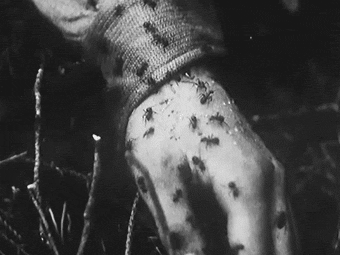
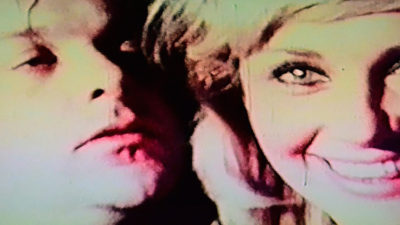
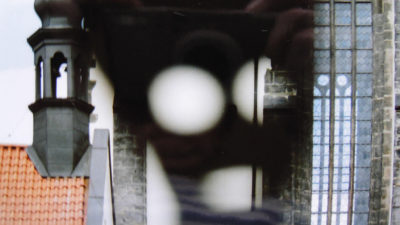
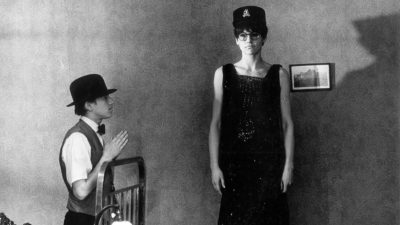
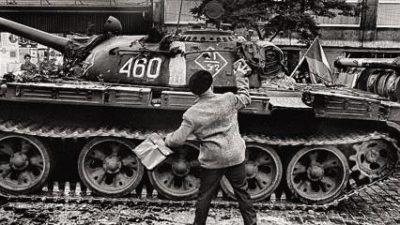
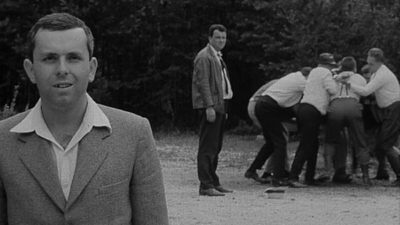
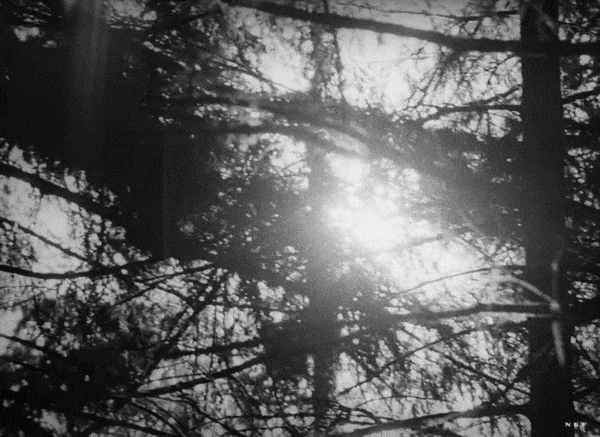

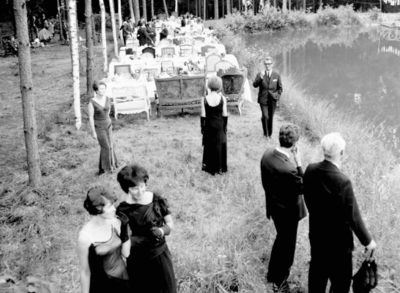
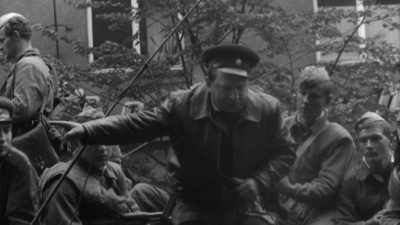
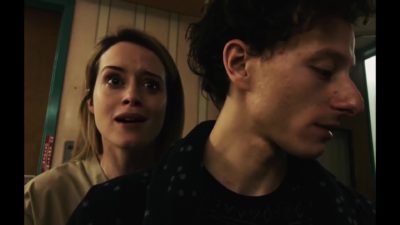
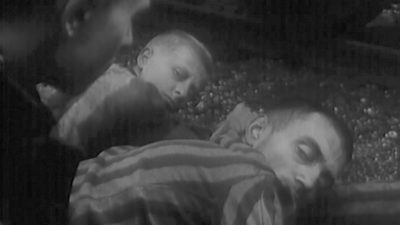
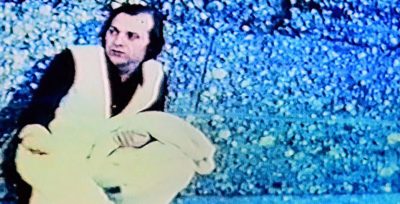
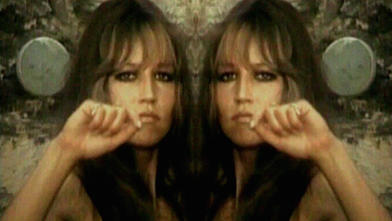
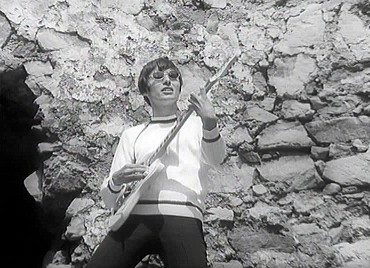
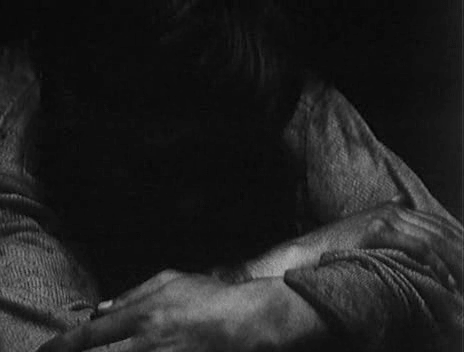
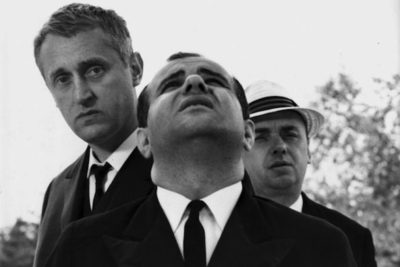
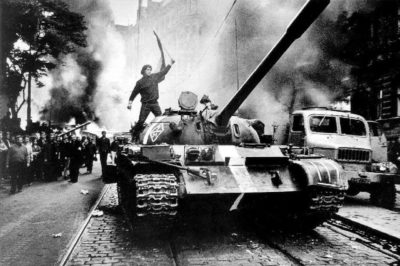
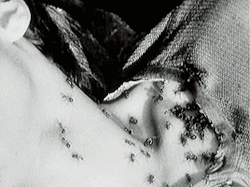
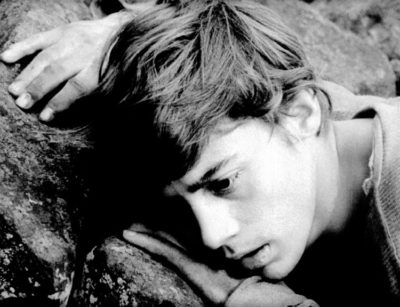

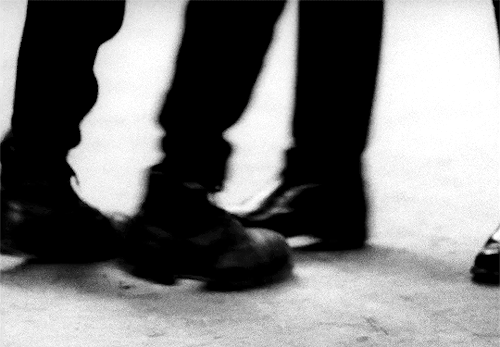


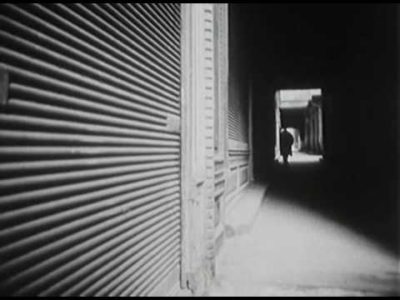
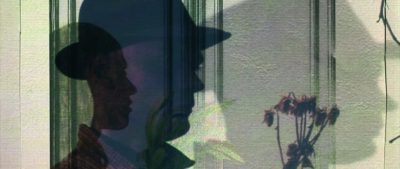


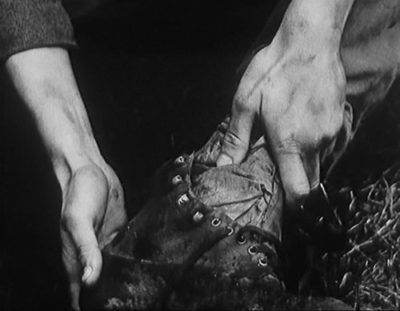

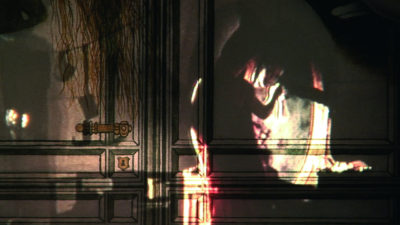
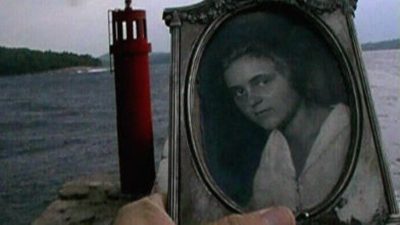


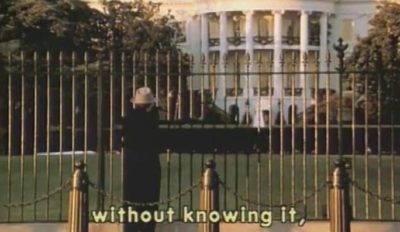
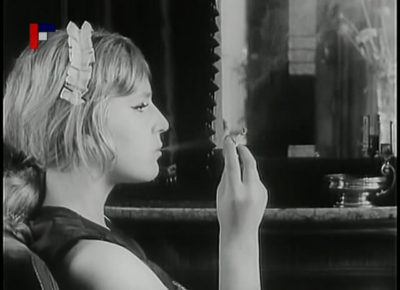

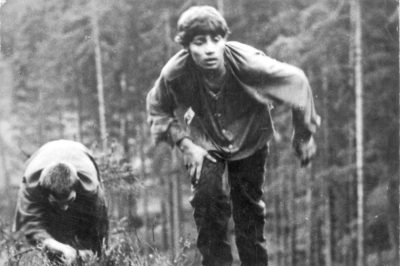
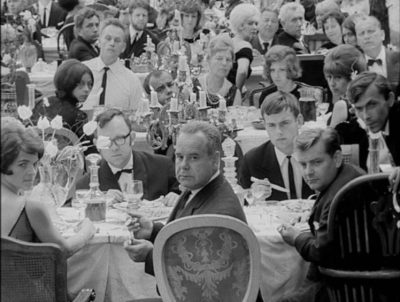
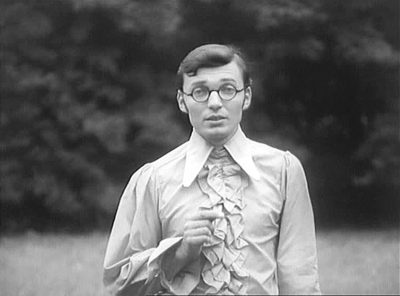
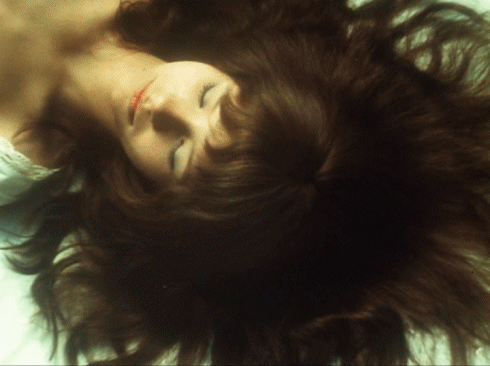

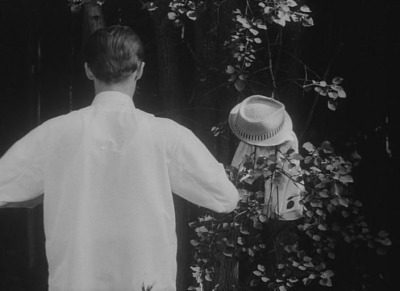
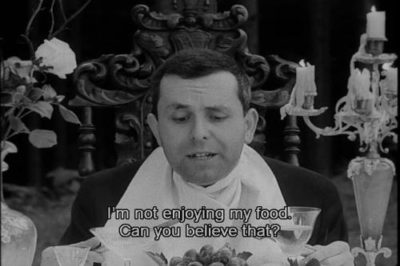
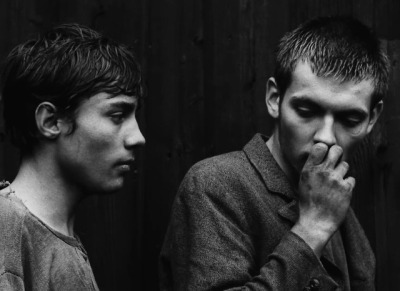
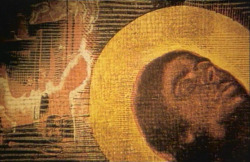
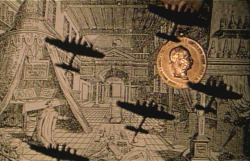
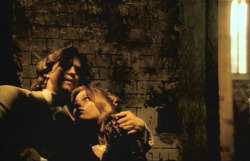
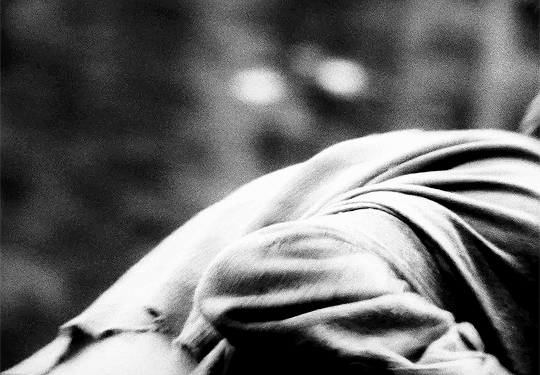
_____
Further
Jan Name @ IMDb
Independent of Reality: The Films of Jan Nemec
Jan Nemec, 1936–2016
Czech Director Jan Nemec Dies at 79
JAN NĚMEC: Enfant Terrible
Half a Century of Innovation in Film
Faceted Depictions of War: On Jan Němec’s ‘Diamonds of the Night’
Jan Němec by Steve Macfarlane
Invitation to the Party: Jan Nemec’s 1966 Satire of Czech Communism
Recalling how Jan Nemec changed history
____
Extras
A Tribute to Jan Nemec: By Vincent Shkreli
Karel Roden a Jan Němec
JAN NĚMEC RETROSPECTIVE (trailer)
____
Interview
from CER
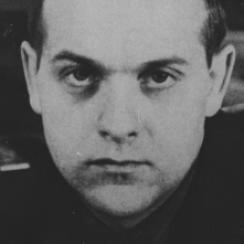
CER: What was your notion of film directing when you came to FAMU [Prague’s film school]?
Jan Němec: Of course, I had no experience in film. I was 18, had just graduated, and it was 1954. At that time it wasn’t possible to get film experience, there was no video, as now. I was an amateur jazz musician, I played the piano and clarinet, and I was thinking about music studies. But at the last minute—after consulting with my father—an engineer, manager, a practical man who hinted that as far as making a living goes it’s better to be a filmmaker than a jazz musician—I decided to be a film director.
If rock-and-roll had existed at the time, I probably would have decided to do that, because it was fun, a free-for-all, no responsibility or career, just glory and money. Actually, my latest film, Nočni hovory s matkou (Late Night Talks with Mother, 2000), is a rocker’s confession.
The other thing that explains why I chose filmmaking was that I was temporarily suspended from school because of my bad behavior. It meant that the school didn’t give me a recommendation for studies at university. There was only one exception to this requirement: the artistic universities, where only an audition was required. So I decided on filmmaking.
CER: Was there any concrete, intensive film experience that made you interested in filmmaking?
JN: No film had influenced me, because there were no foreign films playing at that time. But there is one influence that affects me to this day. My father was a devoted amateur photographer. He had more than a thousand pictures, so I had some vague experience of photography. Photography follows me up to this day. If I can, I put it in my films.
CER: What sparked your conception of “pure film”?
JN: When I went to FAMU, I really applied myself. I didn’t go to the pub with friends. I really got hooked on film. And when I made my first two school films, Sousto (A Loaf of Bread, 1960) and then the feature film Démanty noci (The Diamonds of the Night, 1964), based on the short stories of Arnošt Lustig, I realized that film was an exceptional medium. It was about finding a pure film language.
There were only a few filmmakers who treated film like a special medium of storytelling. I was influenced mostly by the French director Robert Bresson, whom I revere greatly, as well as by Alain Resnais, Luis Buñuel, Ingmar Bergman and Federico Fellini. Their films could be told as stories, but the cardinal experience is from the film itself.
Film is in decay these days. Everybody makes films that could be a serial, novel, picture documentary, radio play or romance novel. Hollywood leads this trend of entertainment. The film profession is in deep decline, not only in our country [Czech Republic], but everywhere in the world.
CER: And was there any influence of Beckett or Pinter? Did you read their plays? Were they published in Czechoslovakia during that time?
JN: Yes. They were known. Usually, they were published in the magazine Světová literatura, where Josef Škvorecký was editor-in-chief. I read all of Kafka’s work and I wanted to film his story “Metamorphosis.” But I couldn’t do it here [Czechoslovakia], so I finally made it in Germany. But I don’t feel literally influenced by any of these writers. Pinter and Beckett were “theater” for me.
Perhaps Kafka was closest to me, due to his poetic character. But I think that whoever lives in Prague and walks through the old narrow cobblestone streets has to feel Kafka’s influence. So the influence is not directly from the literary work, but from the spiritual feeling. These are very mysterious things.
Just a short time ago I saw Renoir’s film La règle du jeu (The Rules of the Game, 1939) and I realized that lots of scenes are similar to my film O slavnosti a hostech. It really looks like I copied it from him. La ègle du jeu was made in 1939 and my film is from 1966, but I hadn’t seen it.
The same thing happened with Buñuel and his film El Angel Exterminador (The Exterminating Angel, 1962). There certainly is another similarity, and people say I copied it from him, but I saw Buñuel’s film about 5 years after the completion of O slavnosti a hostech.
I do not believe in direct influence, that someone reads a book that tells him how to make a film. But I think there are indirect influences that affect you even when you’re not aware of it. The mysterious and abstract characters of the film O slavnosti a hostech arose because of our fight against censorship. We would have had no chance of making the film if it had been more concrete. We used “over-stylization” to confuse the Communist censors so they would not immediately realize that it was aimed against them.
But they found something I did not think of. In the film there is the character of the host, played by our good friend Ivan Vyskočil. He was not a film actor. He had his own performances in a theater with his own texts, so it was hard to make him read the text from the script. And one of the censors said that he looked like Lenin and that we were making fun of Lenin and Leninist principles. After that, I realized that there really is a likeness between them. The censors took used this idea as a pretext against the film. I was very surprised at the time.
CER: After your return to the Czech Republic, your feature-length films from the 1990s aroused little interest from the audience and the critics. What was the cause of it in your opinion? Is the interest of critics and audience important for your work?
JN: In the 1990s I made three feature films, V žáru královské lásky (In the Flames of Royal Love, 1990), Jméno kódu Rubín (Code Name Ruby, 1996) and Noční hovory s matkou, which will be copied on 35mm film and shown in cinemas by the end of the year. The film V žáru královské lásky was very successful with the audience. 50,000 people saw the film in two weeks. It was number in attendance. But the film received crushing reviews.
In the 1960s it used to be opposite. Then, the first box office success slowly died down, because nobody cared about its advertising. Jméno kódu Rubín did not have a positive fate. Most of the reviews were overwhelming again.
There was a big problem with its distribution because a private distribution company that was supposed to advertise the film did nothing for it, so the film was hardly shown in cinemas and there was no advertising campaign. people could see the short version of Noční hovory s matkou on the Internet. Soon I am going to present it on DVD and after that it will probably be shown in cinemas.
CER: Which medium suits you the best?
JN: I liked the way my last film was presented on the Internet, and right after that or even during the presentation we had “questions and answers.” It was fascinating, because it was absolutely spontaneous. Not like press presentations, or premieres and parties. People reacted impulsively, some in a positive way, some very negatively, but always directly.
I hope I have the chance to make a film that will provide me enough money to live on so that I can make another film that people all over the world could see and tell me what they think about it. I presented the short version of my film on the Internet and then revised the film according to some of the opinions and reactions. I take it as a constructive dialogue with people. I think that modern communication will make people more interested in what they want to see. Not just applaud.
Communication is going to change. Everything will be transferred by electronic signals, over satellites that will be in accessible all over the world. Technically, everything is solved. I hope to live a couple more years, so that I can be a part of it.
____________
11 of Jan Nemec’s 26 films
____________
Diamonds of the Night (1964)
‘Diamonds of the Night (Démanty noci) announced itself in 1964 as what it remains: a key early film of Czechoslovakia’s New Wave and a hard, shiny, multi-faceted gem that flashes in the mind without giving away its essential secrets — and that’s part of its secret. It’s not only possible for audiences to emerge from this movie without a clear idea of what happens in it, it’s virtually required. We’re left with existential terror. That’s a remarkable feat in general and especially so with a film that apparently has a happy ending.
‘The trouble and glory with Němec is that he’s interested in fragmentary, fractional, refracted and refractory narrative, based partly on his reading of William Faulkner and partly on his youthful excitement at the discovery of dream-and-memory in the films of Alain Resnais. Němec also responded to the meticulous, stripped-down, emotionless observational approach of Robert Bresson’s A Man Escaped (1956), one of the most non-melodramatic suspense thrillers ever made. (Another is Jacques Becker’s 1960 film Le Trou, indebted to Bresson.) In another bonus, critic James Quandt discusses these and other influences, from those in your face — Luis Buñuel and Salvador Dali’s Un Chien Andalou (1929) with its ants crawling on a man’s hand — to the more subtle, like Andrei Tarkovsky’s Ivan’s Childhood (1962), which Quandt observes would make a good double feature with Němec’s film.’ — Pop Matters
Excerpt
the entirety
______________
Podvodníci (1965)
‘Included in the portmanteau film Pearls of the Deep (Perličky na dně, 1965), Němec’s The Impostors (Podvodníci) was a fatalistic ten-minute comedy about two elderly men in a hospital ward swapping typically Hrabalian shaggy-dog reminiscences about their allegedly distinguished journalistic and operatic careers. When death silences them for good, the hospital staff reveal the prosaic truth.’ — bfi
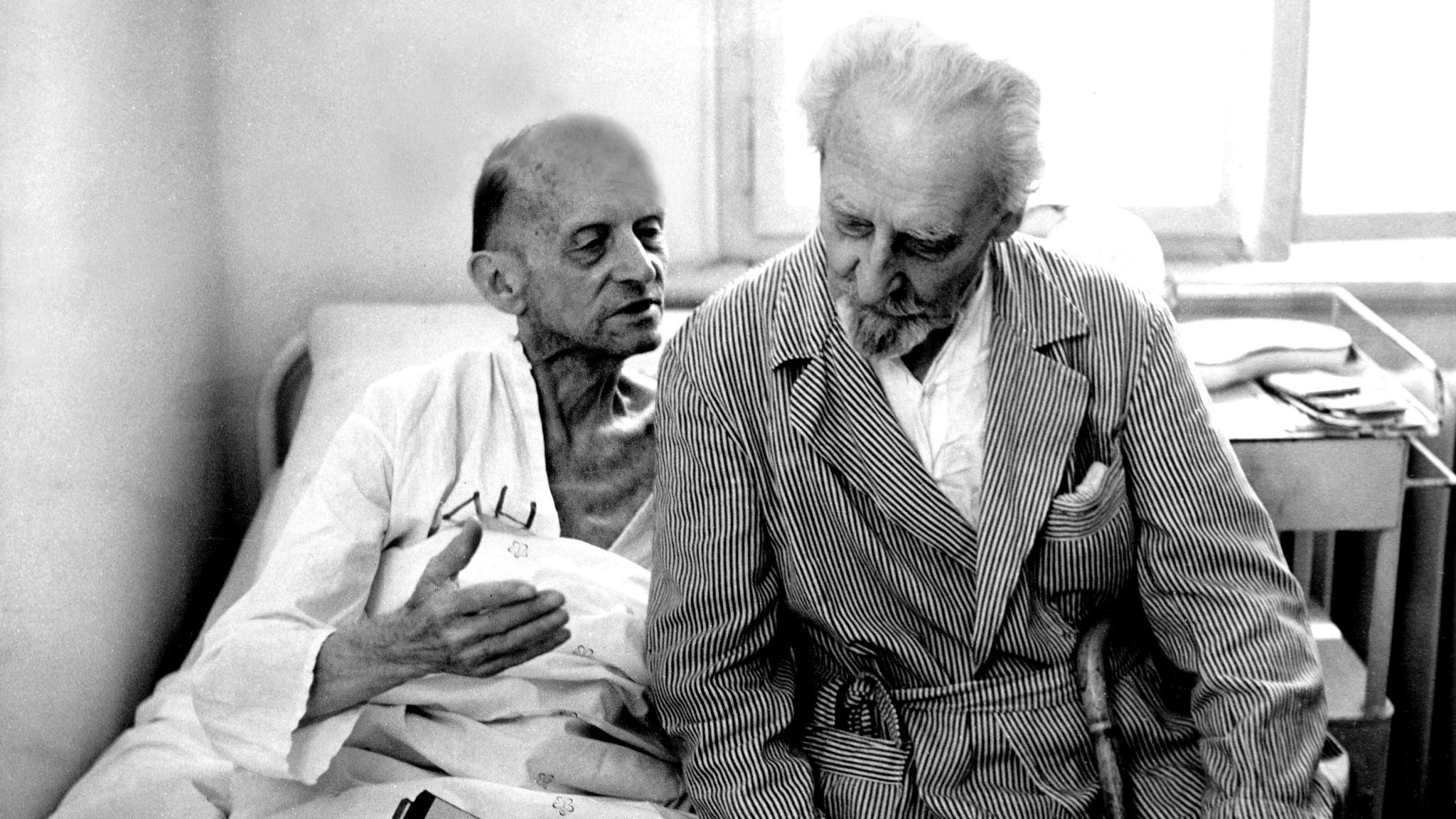
_____________
A Report on the Party and Guests (1966)
‘Even under the relatively liberal 1967 Czechoslovakian regime, The Party and Guests was banned (at the same time as Vera Chytilová‘s Daisies) because it had “nothing in common with our republic, socialism, and the ideas of Communism.” The movie was briefly exhibited during the Prague spring of 1968 then banned again after the Soviet invasion. In the second round of censorship, hardline President Antonín Novotný honored Party and Guests by naming it one of four films that were “banned forever” in the dictatorship. The movie was filmed quietly and quickly in five weeks because director Jan Nemec was afraid that authorities would shut down the production.’ — 366 Weird Movies
Excerpt
_____________
Martyrs of Love (1967)
‘This three-part ballad, which often uses music to stand in for dialogue, remains the most perfect embodiment of Nemec’s vision of a film world independent of reality. Mounting a defense of timid, inhibited, clumsy, and unsuccessful individuals, the three protagonists are a complete antithesis of the industrious heroes of socialist aesthetics. Martyrs of Love cemented Nemec’s reputation as the kind of unrestrained nonconformist the Communist establishment considered the most dangerous to their ideology.’ — letterboxd
Excerpt
____________
Oratorio for Prague (1968)
‘A big admirer and direct participant in the Prague Spring, Němec intended to make a documentary about it, capturing the first steps of Communist Czechoslovakia towards democracy in the late 1960s. Enthusiastically and even euphorically filming the streets of Prague full of unprecedented freedom and young people opened up to a new world, he could not expect that everything would soon be destroyed by the invasion of the Soviet army which would cover the same streets with blood and the dead bodies of young protesters. Peace turning into violence and chaos, as well as hopes becoming illusions and just nothingness, are the true subjects of this film which features the iconic images of Soviet tanks crushing the Prague Spring. That footage, shot by Němec and his crew without authorisation, was secretly transported abroad and immediately went viral, as it was widely broadcast by Western television and defeated the propagandistic version of the same events fabricated by pro-invasion Communists.’ — iffr
Trailer
______________
Čas slunce a růží (1968)
‘Karel Gott in the lead role of a music film by screenwriter and director Jan Němec. Karel Gott and his band recorded songs in natural Slovak scenery, without accompanying words or connecting events. Interestingly, one of the girls doing silent staffing in the film was played by the then Miss Czechoslovak A. Strkulova.’ — collaged
the entirety
_______________
In the Light of the King’s Love (1991)
‘The film tells the life story of its director, Jan Nemec, one of the most known and important filmmakers of Czech New Wave.’ — IMDb
the entirety
____________
Code Name: Ruby (1996)
‘Jan Nemec’s mid-90’s love story follows a flight controller Michal and his mysterious partner Ruby in pursuit of the Philosopher’s Stone, creating gold along the way. By reaching back into antiquity, our protagonists establish Prague as the seat of alchemy, sought after by foreign forces for centuries. In 1995, President Vaclav Havel rewards commandos of the U.S. forces that helped free Czechoslovakia in 1945, but Nemec posits that they also helped protect Prague’s alchemical secrets..
‘To some, this is primarily a love story, to others it’s a tale of cold war conspiracy, but primarily, it’s another one of Nemec’s odes to Prague. He argues for Prague’s importance in the history of Europe through Ruby, a symbol of the good St. Wenceslaus, a metaphor for the eternal fire which burns without flame. Certainly, the history of the Czech people have been a struggle of identity and independence in the face of European factions much more powerful. And Nemec unveils a specific spectre: the state of Nazi Germany. He notes their proclivity towards the collection of mystical secrets, and implies that it is achieved by a rape of the country. In the case of ‘good vs. evil’ it is the forces of Generals Patton and Eisenhower who vanquish the Nazis and recover the artifacts. Yet, not unlike those who discovered King Tut and died of poisoning in later years, those American voices (J.F.K., John Lennon, Eisenhower, and Patton are mentioned) soon met their end. Ruby is the spirit of Czechs, who were born once in 1946 under Benes, and revived using the ‘Philosopher’s Stone’ in 1993 under Havel. Unsurprisingly, it is Czech independence which plays an active role in Nemec’s film.’ — Cora Berube
Excerpt
____________
Late Night Talks with Mother (2001)
‘Late Night Talks with Mother is a stylised selfportrait of the Czech filmmaker Jan Nemec, inspired by Kafka’s Letter to Father. A fictional dialogue between Nemec and his dead mother forms the soundtrack to images of Prague, following the route of tram 11: from the statue of Wencelas in the centre to the Strasnic crematorium, where the son goes looking for the grave of his mother. He wasn’t there when she died. Just like Kakfa’s hero from The Trial, Nemec was charged without apparent reason and had to flee abroad, an event he still regrets greatly and for which he asks absolution, sitting on his mother’s grave.This autobiography filmed on miniDV (in the words of Nemec: ‘Digital, but with heart and soul’) is also a journey past milestones in the history of 20thcentury Prague, such as the Second World War, the Soviet invasion and the presidency of Václav Havel. Late Night Talks with Mother is however not a documentary: Nemec is played by the popular Czech actor Karel Roden. Almost all Nemec’s friends and acquaintances perform in the film, including some striking cameo roles, such as those by Václav Havel, Saul Zaentz and Eric Clapton.’ — iffr
Excerpt
Excerpt
______________
The Ferrari Dino Girl (2009)
‘Jan Němec returns to the drama of August 1968 when Soviet troops and tanks occupied his country, the incident that changed the destiny of the country for 21 long years. With an impromptu crew, the director (here played by his alter ego in many of his films, Karel Roden) captured unique evidence of random attacks, soldiers shooting, dead bodies lying on the pavement. The material was, however, worthless in occupied Prague; it had to be shown to the rest of the world.
‘So, while the Soviets concocted false reports for propaganda purposes of hearty welcomes without military resistance, the director set off with the footage on a risky trip across the closed Czech-Austrian border to Vienna with the help of Jana, the most beautiful girl in Prague: the Ferrari Dino Girl. The film consists of two parts: the reconstructed past, and the unique document of the Soviet invasion previously used in part in Němec’s 1968 film Oratorio For Prague.’ — iffr
Trailer
_____________
The Wolf from Royal Vineyard Street (2016)
‘The Wolf From Royal Vineyard Street is a typically uncompromising final reckoning from Czech director Jan Nemec who died in March 2016, aged 79. Provocative to the last, he revisits key moments from his life with a dash of bravado and an urge to set down his memories from the front line of history.
‘There is a little settling of scores along the way and an exuberance that matches the swashbuckling spirit of Alejandro Jodorowsky’s recent trips down memory lane in The Dance Of Reality (2013) and Endless Poetry (2016). Entertaining and informative, the film is essential viewing for movie buffs and should encourage those audiences to seek out screenings of Nemec’s films.
‘Nemec gives the impression that his career never recovered from all the tumult of 1968 and his subsequent exile in Germany. Self-pity seems foreign to his nature but there is a melancholic air of unfulfilled hopes in his subsequent life in America where he earned a living as the director of wedding videos and from teaching.’ — Screen Daily
Trailer
*
p.s. Hey. ** Milk, Hi, Milk. They’re not children, they’re legal, their sadness just makes them look childlike. Yeah, I think I’m going to go back to a Hartley film too and see what’s what. That’s a sad state of affairs: your friends’ seeming need for speed and messaging. ** David Ehrenstein, Hi. Yes, he was hit crossing the street in front of Beyond Baroque where he was going for some event, which is very eerie to me. ‘Sissy-Boy Slap Party’ was embedded in full in the post, but thank you the add. I can’t do that with the Trow post because the blog is locked down through the third week of March and that post is still alive and active (27,000+ hits when I checked), but what I’ve done is move your guest-post forward from this week to the 18th, which makes total sense, I think, and the next time I go out of town, whereupon I post reruns rather than restorations, I’ll re-up the Trow. ** Bill, Yes, very sad. He was still writing at his powers’ peak too. I have seen ‘Speaking Parts’, but I’m hardly remembering it this morning. Worth a revisit? The Russian twinks are still out there, but now only on sites that are the porn site equivalent of thrift shops. My weekend was all right. Crazy wind and rain storms here. Pretty wild. And yours? ** Misanthrope: Thought you might: Mokhorev. Ha ha, Kinkade jigsaws, that’s kind of cool for some reason. Places to start. Not sure if there’s a Chalamet one, but you could have one custom made from your fave TC pic via various sites out there for almost pennies. Yeah, I get you on the excessive mourning thing. I guess I’m so utterly fed up with people posting aggravating, scared, angry, fear-mongering, etc. crap that even insta-sadness feels fresh. Glad your pain bursts aren’t stopping your editing efforts. Any title candidates? ** Sypha, Hi. Ha ha, yeah, it’s crazy how many sad Russian twink porn star posts there are mouldering in the old blog’s ruins. Right, gotcha. What a curious fear. What an interesting theory that death would turn everything upside down. Nice. They were total smarty-pants, those ancient Egyptians. And stylish as fuck. ** Steve Erickson, Cool. I hope the visibility isn’t just a fluke. Glad to hear he has a new and actual film coming out. The interview was fascinating, thank you for sharing that. Excellent about the Brooklyn Rail gig. Such a good venue. ** _Black_Acrylic, Do it. (Millhauser quote). ‘Dogtooth’ is one of those films I’ve meaning to watch for ages. I really need to start putting things on post-its and planting them somewhere. Sounds worthy. ** Okay. Do you know (of) the films of Jan Němec? Well, if you don’t, after today you have no excuse. See you tomorrow.




 Now available in North America
Now available in North America 
Czech cinema o the 60’s is an artistic wonderland. “Diamonds in the Night” and “a Report on the Party and the Guests” are marvelous. So great Nemic is still with us.
The Oscars were BORINGBEYOND BELIF with Leaf Phoenix (who won Best Overactor for “Joker”) gave a demented speech complaining about everything from a Super-Vegan perspective. He even went on about how we “steal” from cows milk meant for their offspring. YIKES! He did however mention his brother River who as we all know died in his arms.
Happy that “Parasite: won so many awards. It’s the perfect bitch-slap to Trump who “fell in ove” with the dictator of North Korea and has no interest whatsoever in defending South Korea.
Hey Dennis.
I had never seen any of Němec’s work. It looks like ‘Diamonds of the Night’ is playing on Criterion Channel so I’ll give it a look after I sign off.
I’m sure you heard the news of Guyotat’s passing. Very sad. Is there any news on the cause? I’m trying to put together a memorial reading of ‘Eden’ where like 10 or so people read a block of pages until it’s finished. I’ll let you know how it goes.
I got a story accepted into Hobart. It won’t be out ’till May, but I wanted to share the good news.
How have you been? I’m on my last semester of college, so I’ve been trying to stay afloat. Watching movies has been my only relief lately. Haven’t read much. I hate to ask because it feels like such an eye-roll question, but what do you make of Houellebecq? I read ‘Submission’ and thought it was fine. His new book sounds better, but I don’t know. Curious to hear what you think since you’re closer to context I guess.
Hope everything’s good on your end. If not feel free to go off.
Seeya, KK
You’ve been on a tear with the blog! I flipped through The Red Book for the first time a day or two before the post, uncanny.
I’ve been meaning to watch more Nemec ever since seeing his Metamorphosis (primarily filmed from POV of giant insect) a few months ago. Here’s the link again for anybody who’s interested. Note it’s in German without good English subtitles:
https://www.youtube.com/watch?v=eHVf2LSBHtU
I’ve been reading non-stop; haven’t read this way since I was a pre-internet curious kid. It seems to help me to keep a bunch of books around of varying types that break down easily into sections, picking them up and putting them down at will. The books are also clustered together in groups that are at least to me thematically related. Do you switch between books or read one at a time?
I’m a juror for the Tel Aviv student film festival and almost all the submissions are super-serious. I want to make an audience laugh, know it’s not easy, will look for help wherever I can find it. Coming back around to an old idea to cast my green grocers (brothers, neighborhood old-timers, play off each other well) in comic roles rather than make a documentary about their lives. Seen any good comedies lately?
Asked a girl out for the first time in years. She turned me down by saying she’d like to go out with me, can’t because she has a boyfriend, but if he were to die… (awkward silence, I break with a stock Hebrew phrase to ward off evil spirits). I bet I can win her heart without overly drastic measures.
I’ve added Diamonds of the Night to the top my DVD rental list. Should make for quite a double bill with Joker if they send those together haha.
Dennis, excellent post, thanks! So many wonderful images. The weekend’s Varioso was a total treasure trove too.
Brilliant to see the TV script made its way to where it’s got to go. Any j-trip updates? Are you guys still looking around March/April…?
Also, wanted to let you know the new Left Hand print comes out this week (13th). On a side note, kind of work related, I’ve been writing a linguistics paper on My Loose Thread. I loved it when it came out but reading it again nearly 20 years later, and as a close reading, across lines and sections, on micro and marco levels, oh man, unbelievably fantastic.
dennis, hi, thank you very much for ur kind words and support and thinkings!!! yesterday’s post was a fascinating compilation text as ever and really excited the neurons around my head, pity that uni starts next week because i’d love to just dive into adjacent horizontal things and thinkings. jan nemec has been an individual i’ve been long-time fond of!!!!
now i’m reading about the admittedly fascinating human animal binary and i’m possibly interested in doing some academic work on ‘equus’ by shaffer or on the first season of ‘the leftovers’ which has some gorgeous animal imagery. lovely to hear that the ARTE project and word of some sort of it finally appears to be in sight. i think it’s been lying around this blog since i first spoke on here to you!!
my next book, sola virgo, the texas chain saw massacre one, is officially a go from amphetamine sulphate, received some glowing feedback today and very excited to dig in on the difficult work now. aiming for a june release date, philip & i are both busy so who knows. starting to toss up a completely-fiction thing, something a bit new and out of character in comparison to my first two books, a noir of sort where the translation into ‘black’ is precisely the text, the inability to see.
very pleased to see parasite’s big night out at the oscars. saw a weird interview with ur french prime minister the other day, not sure what your thoughts on him are.
anyway i send love among the rushes
j
Dennis, I’d defo do a Kinkade jigsaw just for the corn factor. “Oh, you’re doing a jigsaw puzzle?” “Yeah.” “What of?” “A Thomas Kinkade painting.” “Eep!” 😛
You’re right about the Chalamet one. Lord knows there are enough calendars with him on Etsy. For Christmas last year, my niece bought me a little notebook with his pics on the front. I’ve been using it for notes for my novel. Take it to work every day (for when I get something I need to write down or when I get a break). One guy was like, “Is that that Chalamet guy?” I’m like, “Yeah, my niece bought it for me.” “Oh.” I saw another guy look at it and look away nervously, hahaha.
Shit, I’d take the insta-sadness over that other crap any day.
Yikes! I still haven’t gotten a title for it yet. Usually, that comes to me so easily. Maybe because this is so outside the realm of what I usually write, you know? I have a few candidates, but I get to thinking about each one, and it’s just…not right. Like, I can see someone seeing the title and thinking it’s something it totally isn’t. I’m just gonna trust on it coming to me when I need it. 😮
DIAMONDS OF THE NIGHT & A REPORT ON THE PARTY AND GUESTS are great, but Nemec’s post-’68 career was a mystery to me.
As Hartley said when I talked to him, he goes into production on a new feature in April.
Tomorrow afternoon, I will be getting some tests as a preliminary step to my cataract surgery. I hope everything goes smoothly. I haven’t been feeling that great lately.
Sorry to hear about the crazy weekend weather, Dennis. It’s been cool and dry here, so pretty normal except it shouldn’t be this dry. Hope we’re not headed for another drought season.
I’m not familiar with Němec at all. The ’60s films in particular look very enticing, will check out Diamonds of the Night soon.
I happen to be reading the Prague writer Ewald Murrer’s short stories. Very dream-like and enjoyable.
The radio gig went pretty smoothly. Video is up: https://www.youtube.com/watch?time_continue=14400&v=RK_phm8-3e8
Bill